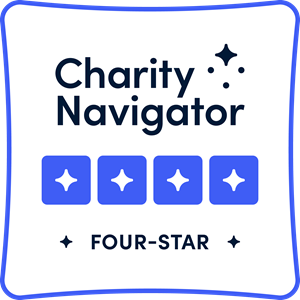Making Space for Community
At the Federation, we are deeply invested in designing Jewish experiences that connect people, generate a sense of belonging and inspire a shared purpose. As I’ve written about previously, successful community building doesn’t happen by accident – it’s cultivated through practices and habits that develop our communal “muscle.” The Federation funds programs that bring people together in intentional ways, but what about the physical spaces where community building occurs? Aren’t they critical to effective community building?
Absolutely.
Jewish history in the Bay Area is rich with examples of how Jews built or helped finance physical spaces where people gather to connect and feel part of a whole. Rosalie Meyer Stern donated her land to San Francisco that became Stern Grove, a popular site in summer for free music festivals. Herbert Fleishhacker played a role in funding the War Memorial Opera House, and Ignatz Steinhart gifted the Steinhart Aquarium, which became the California Academy of Sciences. At the Federation, we continue this tradition with a modern approach of working collaboratively with the community to support the development of spaces that will foster human connections and Jewish affinity. Below are four examples of recent Endowment Fund grants that build the physical infrastructure around the Bay Area.
A Time to Grow: Oshman Family JCC
The Oshman Family JCC anchors the 8.5-acre Taube Koret Campus for Jewish Life, co-located with the Moldaw Family Residences in Palo Alto. Since opening in September 2009, the Campus has created a hub for the region's Jewish community, providing high quality Jewish educational, arts, fitness, youth engagement, Israeli culture, and other programs at its state-of-the-art facility.
As we learned in our recent Community Study , one-third of the Bay Area’s Jewish population resides on the Peninsula. The JCC expansion addresses its demand for greater square footage, given its growth in membership (over 10,000 members), diversification of programs, and need for places to gather, engage, and celebrate Jewish life. The project’s centerpiece is the Park and Pavilion, designed to add green space, play areas, and a two-story activity center. The campus looks and feels like an intergenerational town square, with preschool parents chatting over coffee in the café next to techies working on laptops and older adults relaxing after a class or workout.
Protect and Preserve: Camp Tawonga
At 93, Camp Tawonga is our oldest Northern California Jewish overnight camp, serving 2,700 people a year through summer camp, teen adventure quests, and family camps. Tawonga’s “Down the Mountain” programs, from its mass outdoor Rosh Hashanah service for 1,000+, to its B’nai Mitzvah program serving 100 kids with waiting lists, demonstrate the camp’s success in extending its brand of outdoor communal Jewish spirituality to the entire Bay Area. After losing buildings and trees during the 2013 Rim Fire, the Camp is reducing fire risk while protecting the environment and expanding its capacity to house more people.
Tawonga is projecting a 40% increase in people served once the project is complete: from 1,200 campers to 1,400 over the summer, and from 1,000 family camp participants to 2,000. Those numbers mean more people connecting to Jewish life through Tawonga’s unique communal experience.
The Show Must Go On: URJ Camp Newman Summer Programs
In the six months since the North Bay wildfires destroyed URJ Camp Newman, the camp’s leadership has had to confront several enormous challenges simultaneously including finding a temporary site for this summer’s programming, while at the same time navigating clean-up, insurance assessment and planning to rebuild the camp.
Miraculously, within 6 weeks of the fire (and with help from JCRC and the Federation), Camp Newman found a temporary home at Cal Maritime in Vallejo. However, the costs of running a temporary rental site for the next few summers are significant. The Federation’s Endowment Fund stepped in with a three-year emergency grant to help Camp Newman create a temporary home for the 1,000 kids heading to camp this summer. Camp Newman’s resilience in the face of adversity reminds us that a community is both the structures that surround it and the people who comprise it.
It Takes a Village: San Francisco Campus for Jewish Living
One of the most ambitious real estate projects in the Bay Area Jewish landscape is the transformation of the 147-year-old Jewish Home, renamed San Francisco Campus for Jewish Living, into a one-stop campus for older adults and their families, offering a continuum of residential options, medical care, social services, wellness and fitness, retail, arts and culture, and recreational and social activities in one bustling hub. When complete, the $140-million construction project will double the number of people served each day on the Silver Avenue campus, empowering older adults to find everything they need in one “public square” that is both a vibrant physical place and a virtual online community. The Campus’ designed physical spaces, communal programs, and virtual site will ensure that no senior feels isolated and alone, and everyone is supported, seen, and heard.
As all these Jewish places demonstrate, making space for community is critical. As we support these organizations, I remind myself that these projects go beyond capital improvements and facilities. They are spaces where people feel at home – where they gather, connect, become part of something bigger – and that’s where the real magic of community building happens.



